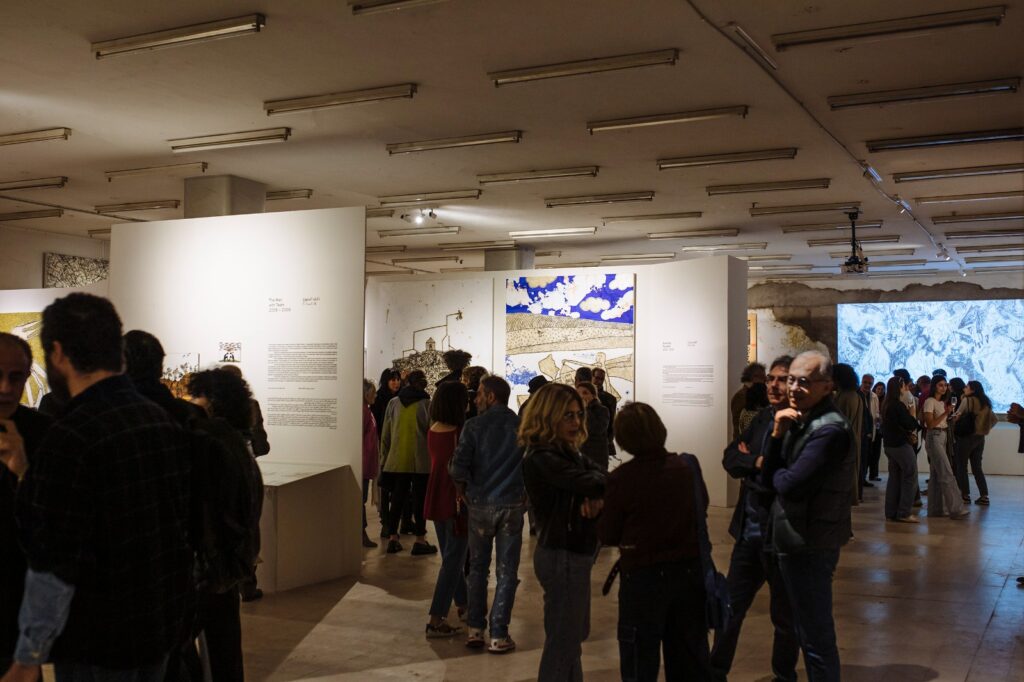
ARCHAIC PROCESSION
The Magic Cube, Sursock Museum, Beirut (1994)
The Carrier, National Museum of Beirut (1995)
The Archaic Procession, downtown Beirut (1997-2000)
The Encounter of Kafka and Kandinsky, Manes Bridge, Prague (1997)
In the 1990’s, the Archaic Procession emerged in Karam’s works as a visual vocabulary; a lexicon of diverse shapes inspired by objects, creatures and people. Its configuration in procession owed much to Karam’s study of esoteric ceremonies conducted in Japanese Buddhist temples, and its diversity of shapes was Karam’s response to the confessional and socio-political disparities in Lebanon, and the conflicts these had engendered.
Karam first began using the Archaic Procession to interact with urban contexts in 1993 through his Paris Metro billboard interventions. From 1994-2000, he developed a series of large-scale public art projects for his native Beirut, as a means of engaging with the city and its recent history. Karam’s Magic Cube installation at Sursock Museum brought an air of fantasy to the 1994 post-war climate, and the following year his Carrier installation at the National Museum called attention to the plight of Lebanon’s cultural heritage. In 1997, Karam entered into dialogue with the city of Prague through his summer installation, Encounter of Kafka and Kandinsky. The Archaic Procession then returned to the heart of downtown Beirut for an itinerant three-year project that aimed to bring new stories to the devastated city.
By 2000, when his sculptures appeared on the streets of Tokyo and London, the procession had fragmented into individual works, and became what Karam termed Urban Toys. The Archaic Procession still endures as a narrative thread through Karam’s practice however; overlapped or fused into abstract tapestries, it continues to evoke pluralism through stories and memories.


